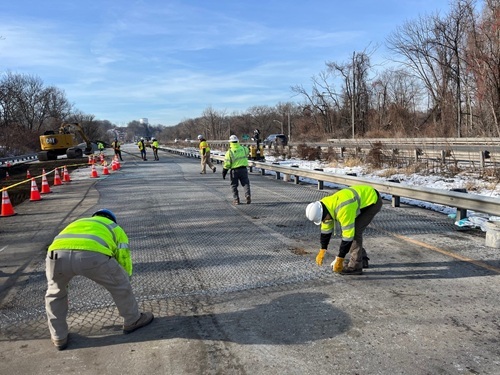Several state departments of transportation recently detailed current and future capital investments being made in their respective regions for transportation infrastructure.
[Above photo by the New Jersey DOT]
The New Jersey Department of Transportation recently detailed benefits of its fiscal year 2025 Capital Program, which invested $1.109 billion in 111 infrastructure – the seventh consecutive time New Jersey has invested more than $1 billion in transportation infrastructure.
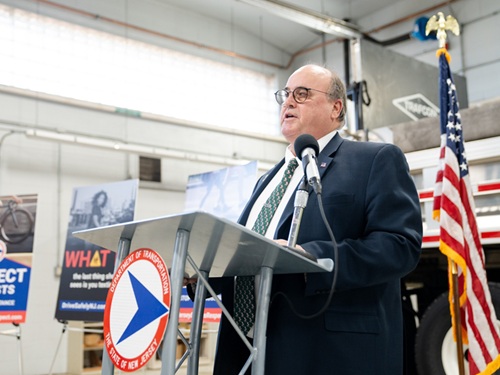
“The New Jersey Department of Transportation has delivered another billion-dollar-plus capital program in FY 2025, with a wide array of safety, operational improvement and state-of-good-repair projects that benefit all road users,” noted Fran O’Connor, New Jersey DOT commissioner, in a statement.
Parth Oza, the agency’s assistant commissioner of capital program management, added that seven-year investment effort is paying off in several ways. For example, in 2018, only 65 percent of state highway lane-miles were in good or fair condition. Today that number stands at 82 percent, she said.
“This is more than an investment in projects – it’s a promise we’re making to the next generation that New Jersey’s infrastructure will be smarter, stronger, and safer. That’s the real impact of this work,” Oza stressed.
[Editor’s note: In the video below, Justin Powell, secretary of the South Carolina Department of Transportation, discusses the agency’s “Momentum 2050” new long-term transportation plan and how it will address projected mobility needs across South Carolina due to future economic and population growth.]
Meanwhile, Governor Kathy Hochul (D) recently unveiled a draft of the 2050 New York State Transportation Master Plan, which will shape the development of her state’s transportation infrastructure for the coming decades.
The New York State Department of Transportation, in partnership with transportation agencies across the state, drafted this forward-looking plan and is now gathering public feedback to help inform the completion of the final document planned for later this summer.
“New York State is making historic investments to rebuild our infrastructure to meet the challenges of the 21st century and we want to keep this momentum going well into the future,” the governor said in a statement. “[This plan will] ensure that New Yorkers get a transportation network that meets their needs, not only for today but in the decades to come as well.”
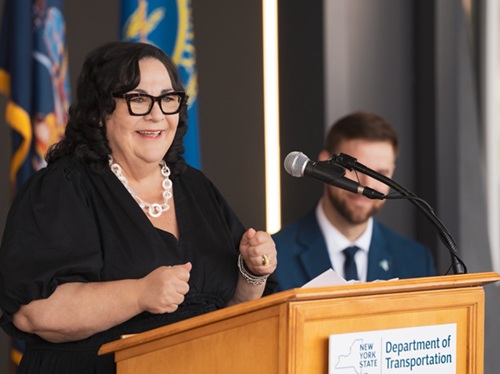
NYSDOT noted in its plan that “transportation is about more than infrastructure – it is about people, places, and experiences.”
As a result, there is a vital need to look beyond specific transportation projects today and create a “holistic vision” for the future of transportation in communities statewide, noted NYSDOT Commissioner Marie Therese Dominguez.
“In order to truly fulfill our mission of providing a safe, reliable, accessible and resilient transportation system that serves all New Yorkers, we must look to the future transportation needs of coming generations and be prepared to meet them,” she said. “This draft master plan is a step in that process.”
In the Midwest, the Missouri Highways and Transportation Commission recently approved FY 2026-2030 Statewide Transportation Improvement Program or STIP.
The FY 2026-2030 STIP makes $13.3 billion in federal and state funding available for all modes of transportation over the next five years. Of the $13.3 billion, the STIP details $9.5 billion in contractor awards for road and bridge construction – averaging approximately $1.9 billion per year.
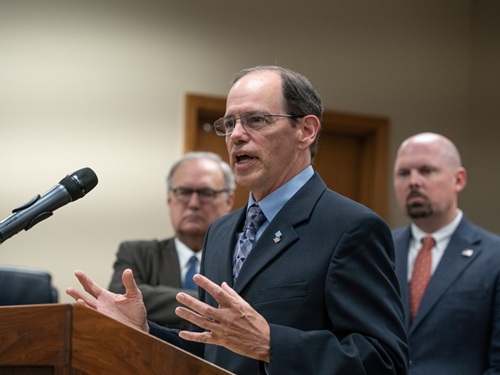
“We’ve seen unprecedented levels of investments in and improvements to the state’s transportation system over the past few years, and this program is a continuation of that,” noted Ed Hassinger, director of the Missouri Department of Transportation, in a statement.
“The recent growth of this program is made possible by an increased motor fuel tax and additional General Revenue and federal transportation investments, and this plan forward shows our full commitment to deliver this major investment for the travelers across Missouri,” he said.
Meanwhile, the Oklahoma Department of Transportation is seeking public input on a new edition of its Long-Range Transportation Plan, which will evaluate community needs and emerging technologies – among other data points – to establish statewide transportation priorities through 2050.
“Our goal is to create a safety-centric transportation system that works for every Oklahoman, whether you’re commuting to work, shipping freight or accessing essential services,” noted Tim Gatz, Oklahoma DOT’s executive director, in a statement. “The public’s voice has shaped this draft and we’re asking for feedback again to make sure we’re moving in the right direction.”
The Wyoming Department of Transportation is engaged in a similar effort as it just launched an online and self-guided “tour” to gather public feedback on a draft of the agency’s 2050 Long Range Transportation Plan.
That plan will provide a “framework,” WYDOT noted in a statement, for guiding infrastructure funding decisions while creating an overall vision for Wyoming’s transportation network for the next 25 years.
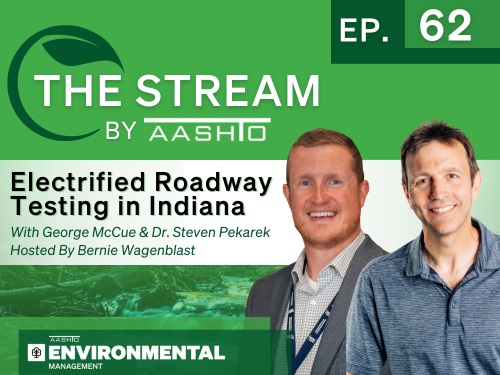 Nation
Nation
The Stream by AASHTO: Electrified Roadway Testing
December 5, 2025 Nation
Nation
